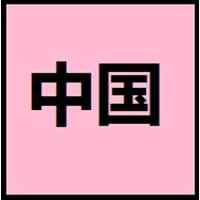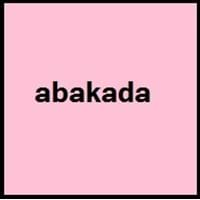Countries
China, Hong Kong, Macau, Singapore, Taiwan
Philippines
National Language
China, Taiwan
Philippines
Second Language
Republic of Brazil
Filipinos
Speaking Continents
Asia
Asia, Australia
Minority Language
Indonesia, Malaysia
Australia, Canada, Guam, Hong Kong, New Zealand, Singapore, United Kingdom
Regulated By
Chinese Language Standardization Council, National Commission on Language and Script Work, Promote Mandarin Council
Komisyon sa Wikang Filipino, National Languages Committee
Interesting Facts
- Chinese language is tonal, since meaning of a word changes according to its tone.
- In Chinese language, there is no grammatical distinction between singular or plural, no declination of verbs according to tense, mood and aspect.
- In 1593, "Doctrina Christiana" was first book written in two versions of Tagalog.
- The name "Tagalog" means "native to" and "river". "Tagalog"is derived from taga ilog, which means "inhabitants of the river".
Similar To
Not Available
Filipino, Cebuano and Spanish Languages
Derived From
Not Available
Not Available
Alphabets in
Chinese.jpg#200
Tagalog-Alphabets.jpg#200
Scripts
Chinese Characters and derivatives
Baybayin
Writing Direction
Left-To-Right, Horizontal, Top-To-Bottom
Left-To-Right, Horizontal
Hello
您好 (Nín hǎo)
Kamusta
Thank You
谢谢 (Xièxiè)
Salamat po
How Are You?
你好吗? (Nǐ hǎo ma?)
Kamusta ka na?
Good Night
晚安 (Wǎn'ān)
Magandang gabi
Good Evening
晚上好 (Wǎnshàng hǎo)
Magandang gabi po
Good Afternoon
下午好 (Xiàwǔ hǎo)
Magandang hapon po
Good Morning
早安 (Zǎo ān)
Magandang umaga po
Sorry
遗憾 (Yíhàn)
pinagsisisihan
I Love You
我爱你 (Wǒ ài nǐ)
Iniibig kita
Excuse Me
劳驾 (Láojià)
Ipagpaumanhin ninyo ako
Dialect 1
Mandarin
Batangas Tagalog
Where They Speak
China, Malaysia, Singapore, Taiwan
Batangas, Gabon
How Many People Speak
Not Available
Where They Speak
China, United States of America
Philippines
How Many People Speak
Not Available
Where They Speak
China, Malaysia, Singapore, Vietnam
Philippines
Native Name
中文 (zhōngwén)
Tagalog
Alternative Names
Not Available
Filipino, Pilipino
French Name
chinois
tagalog
German Name
Chinesisch
Tagalog
Pronunciation
Not Available
[tɐˈɡaːloɡ]
Ethnicity
Han
Tagalog people
Language Family
Sino-Tibetan Family
Austronesian Family
Subgroup
Not Available
Indonesian
Branch
Not Available
Not Available
Early Forms
No early forms
Proto-Philippine, Old Tagalog, Classical Tagalog, Tagalog
Standard Forms
Standard Chinese
Filipino
Signed Forms
Wenfa Shouyu 文法手語 ("Grammatical Sign Language", Signed Mandarin (Taiwan))
Not Available
Scope
Individual
Individual
ISO 639 6
Not Available
Not Available
Glottocode
sini1245
taga1269
Linguasphere
79-AAA
31-CKA
Language Type
Living
Living
Language Linguistic Typology
Subject-Verb-Object
Object-Verb-Subject, Subject-Verb-Object, Verb-Object-Subject, Verb-Subject-Object
Language Morphological Typology
Analytic, Isolating
Not Available
All Chinese and Tagalog Dialects
Most languages have dialects where each dialect differ from other dialect with respect to grammar and vocabulary. Here you will get to know all Chinese and Tagalog dialects. Various dialects of Chinese and Tagalog language differ in their pronunciations and words. Dialects of Chinese are spoken in different Chinese Speaking Countries whereas Tagalog Dialects are spoken in different Tagalog speaking countries. Also the number of people speaking Chinese vs Tagalog Dialects varies from few thousands to many millions. Some of the Chinese dialects include: Mandarin, Wu. Tagalog dialects include: Batangas Tagalog , Bisalog. Also learn about dialects in South American Languages and North American Languages.
Chinese and Tagalog Speaking population
Chinese and Tagalog speaking population is one of the factors based on which Chinese and Tagalog languages can be compared. The total count of Chinese and Tagalog Speaking population in percentage is also given. The percentage of people speaking Chinese language is 16.00 % whereas the percentage of people speaking Tagalog language is 0.42 %. When we compare the speaking population of any two languages we get to know which of two languages is more popular. Find more details about how many people speak Chinese and Tagalog on Chinese vs Tagalog where you will get native speakers, speaking population in percentage and native names.
Chinese and Tagalog Language Codes
Chinese and Tagalog language codes are used in those applications where using language names are tedious. Chinese and Tagalog Language Codes include all the international language codes, glottocodes and linguasphere.





